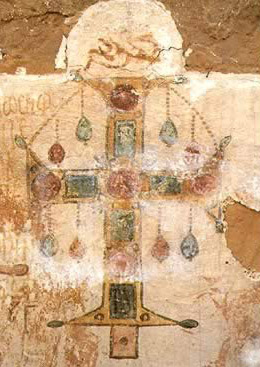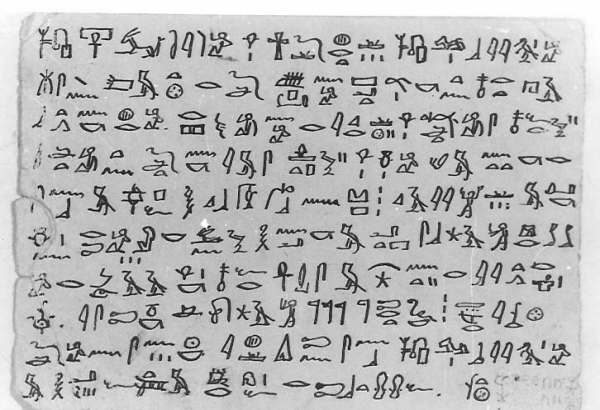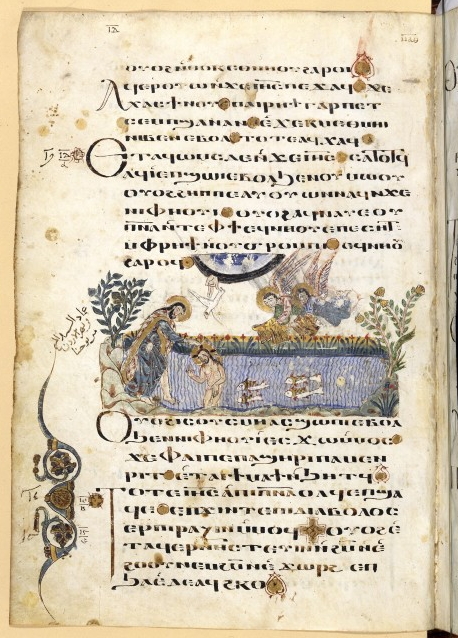|
Coptology
Coptology is the science of Coptic studies, the study of the Coptic language and Coptic literature.What is Coptology? '''' Origin The European interest in Coptology may have started as early as the 15th century AD. The term was used in 1976 when the First International Congress of Coptology was held in under the title "Colloquium on the Future of Coptic Studies" (11-17 December). This was followed by the establishment of the "[...More Info...] [...Related Items...] OR: [Wikipedia] [Google] [Baidu] |
Coptology
Coptology is the science of Coptic studies, the study of the Coptic language and Coptic literature.What is Coptology? '''' Origin The European interest in Coptology may have started as early as the 15th century AD. The term was used in 1976 when the First International Congress of Coptology was held in under the title "Colloquium on the Future of Coptic Studies" (11-17 December). This was followed by the establishment of the "[...More Info...] [...Related Items...] OR: [Wikipedia] [Google] [Baidu] |
Institute Of Coptic Studies
The Institute of Coptic Studies (معهد الدراسات القبطية) was founded in 1954 by the Coptic Orthodox Church of Alexandria. It is based in Cairo. Description The institute is the Egyptian church's main research centre in subjects of Coptology and for shared in many research about different aspect of Coptology since its establishment. The Coptic painters Isaac Fanous and Adel Nassief studied in the institute. The institute is involved in postgraduate studies in Coptic subjects including Coptic music, Coptic art, Coptic iconography and Coptic history. One of the teachers was Mikhail Girgis El Batanouny, the Coptic music expert. From 1955 to 1985 Iris Habib Elmasry continued to lecture in Coptic History at the Institute of Coptic Studies. Foundation The institute was mainly founded by its first president Professor Aziz Suryal Atiya; who was also the Founder of the Middle East center, University of Utah. Other prominent Coptologists and Egyptologists contributed to ... [...More Info...] [...Related Items...] OR: [Wikipedia] [Google] [Baidu] |
Aziz Suryal Atiya
Aziz Suryal Atiya ( ar, عزيز سوريال عطية, ; July 5, 1898 – September 24, 1988) was an Egyptian Coptologist who was a Coptic historian and scholar and an expert in Islamic and Crusades studies. Atiya was the founder of the Institute of Coptic Studies in Cairo in 1950s, and was also the founder of the Middle East Center, University of Utah. His library, The Aziz Atiya Library for Middle East Studies at University of Utah, is considered the fifth largest such collection in North America and is recognized internationally as a major research library in this field. While at the University of Utah, Professor Atiya rediscovered ten lost papyri fragments related to the Mormon scripture, Book of Abraham, in the archives of the New York Metropolitan Museum of Art. Work Atiya published a large study entitled ''The Crusades in the Later Middle Ages'' in 1938, and was also the first author of ''The Coptic Encyclopedia'', published in 1991. The chapters on the Copts in h ... [...More Info...] [...Related Items...] OR: [Wikipedia] [Google] [Baidu] |
Stephen Emmel
Stephen Emmel is a Coptologist and musician. Academic career Stephen Emmel was born in Rochester, NY, 27 June 1952, and earned his B.A. from Syracuse University in 1973 (department of religion). He began graduate study with James M. Robinson, who took Emmel with him to Cairo, Egypt, in 1974 as a research assistant in the international project to publish the Coptic Gnostic texts of the Nag Hammadi Codices. Emmel lived in Egypt 1974–77 in order to complete the conservation of the Nag Hammadi papyri in the Coptic Museum and to assist in the publication of both a facsimile edition of the Nag Hammadi Codices and an English-language edition and translation of the texts contained in them. During those years he traveled several times to Jerusalem to meet with the Egyptologist and linguist H. J. Polotsky in order to deepen his knowledge of Coptic grammar. In 1978 Emmel resumed his graduate study, now with Bentley Layton at Yale University, where in 1980 he discovered a part of Na ... [...More Info...] [...Related Items...] OR: [Wikipedia] [Google] [Baidu] |
Pahor Labib
Pahor Labib (; Arabic: باهور لبيب ''Bahur Labib''; born 19 September 1905 at Ain Shams, Cairo; died 7 May 1994) was Director of the Coptic Museum, Cairo, Egypt, from 1951 to 1965 and one of the world leaders in Egyptology and Coptology. Early life and education Labib was born in 1905 in Cairo. His father was Cladius Labib, also an Egyptologist and Coptologist who was one of the first Egyptians to learn Hieroglyphics from the French Egyptologists in Egypt and who compiled a Coptic-Arabic dictionary. He grew up in Ain Shams, a suburb of Cairo, where his father had a house with a few acres of land (13 "feddans") that were used to cultivate fruits and vegetables. For preparatory school Labib went to the "Great Coptic School" and then to Khedivieh Secondary School, both in Cairo. After Labib received his "Bachaloria", he entered the Faculty of Law. However, the Faculty of Archeology had recently opened and he joined this as well. At the final year, exams for both studies ... [...More Info...] [...Related Items...] OR: [Wikipedia] [Google] [Baidu] |
Christian Cannuyer
Christian Cannuyer (born 17 December 1957) is a Belgian historian of religion, professor at the Lille Catholic University, a specialist in Coptic studies and a genealogist. Career Christian Cannuyer teaches ancient Near Eastern religions, Christian church history, and Coptic language at the Theological Faculty of Lille Catholic University. He has published a number of books, including a volume on the Copts – (1990, collection ""), which won the 1991 Eugène Goblet d'Alviella Prize in the History of Religions of the Royal Academy of Belgium; a lavishly illustrated pocket book for the collection " Découvertes Gallimard" – (2000), which is only available in English and French. He has also authored many articles, such as , , et cetera. Cannuyer is editor of the "" collection at Brepols, published in collaboration with the Centre Informatique et Bible of the Maredsous Abbey. He is the president of the since 1994 and member of the Administrative Council of the Francophon ... [...More Info...] [...Related Items...] OR: [Wikipedia] [Google] [Baidu] |
Göttinger Miszellen
''Göttinger Miszellen'' (often abbreviated as GM) is a scientific journal published by the Seminar für Ägyptologie und Koptologie (Göttingen, Germany) which contains short scholarly articles on Egyptological, Coptological, and other related subjects. Founded in 1972, its aim is to publish information about new discoveries and theories as quickly and efficiently as possible, and to be a forum for scholarly discussions on Egyptology. In line with this philosophy, GM is published at least four times a year, and contributors (who may submit articles in German, English or French) are required to submit camera-ready copy, as articles are reproduced photographically rather than being re-typed or loaded from diskette. Copy is not edited at all by the publishers and is the verbatim work of each author. Each issue is approximately 112 pages in length and costs 4.50 euro The euro ( symbol: €; code: EUR) is the official currency of 19 out of the member states of the Europe ... [...More Info...] [...Related Items...] OR: [Wikipedia] [Google] [Baidu] |
Egyptology
Egyptology (from ''Egypt'' and Greek , '' -logia''; ar, علم المصريات) is the study of ancient Egyptian history, language, literature, religion, architecture and art from the 5th millennium BC until the end of its native religious practices in the 4th century AD. A practitioner of the discipline is an "Egyptologist". In Europe, particularly on the Continent, Egyptology is primarily regarded as being a philological discipline, while in North America it is often regarded as a branch of archaeology. History First explorers The earliest explorers of ancient Egypt were the ancient Egyptians themselves. Inspired by a dream he had, Thutmose IV led an excavation of the Great Sphinx of Giza and inscribed a description of the dream on the Dream Stele The Dream Stele, also called the Sphinx Stele, is an epigraphic stele erected between the front paws of the Great Sphinx of Giza by the ancient Egyptian pharaoh Thutmose IV in the first year of the king's reign, 1401 BC, d ... [...More Info...] [...Related Items...] OR: [Wikipedia] [Google] [Baidu] |
Coptic Literature
Coptic literature is the body of writings in the Coptic language of Egypt, the last stage of the indigenous Egyptian language. It is written in the Coptic alphabet. The study of the Coptic language and literature is called Coptology. Definition Since the term "Coptic" can have, besides a linguistic sense, an ethnic sense (referring to Copts) and a religious sense (Coptic Christianity), there is the propensity for ambiguity in the term "Coptic literature". Coptic literature is usually defined as that in the Coptic language. It is not usually limited to original compositions, but includes also translations into Coptic (mainly from Greek). It also includes texts believed to have been composed in Coptic, but which are preserved only in translation (mainly in Arabic and Ethiopic). In a broader sense, "Coptic" may include Greek literature produced in Egypt that circulated in the Coptic community. The literature that the Copts wrote in Arabic is generally treated separately as Copt ... [...More Info...] [...Related Items...] OR: [Wikipedia] [Google] [Baidu] |
Coptic Museum
The Coptic Museum is a museum in Coptic Cairo, Egypt with the largest collection of Coptic Christian artifacts in the world. It was founded by Marcus Simaika in 1908 to house Coptic antiquities. The museum traces the history of Egypt from its beginnings to the present day. It was erected on 8,000 square meter land offered by the Coptic Orthodox Church, under the guardianship of Pope Cyril V. The Coptic museum houses the world's most important examples of Coptic art. History In 1908, after receiving approval and a number of silver antiquities from Patriarch Cyril V and raising funds by public subscription, Marcus Simaika Pasha built the Coptic Museum and inaugurated it on 14 March 1910. The Coptic community was generous in their support of the museum, donating many vestments, frescoes, and icons. In 1931 the Coptic Museum became a state museum, under the jurisdiction of the Department of Antiquities, and in 1939 the collection of Christian antiquities in the Egyptian Museum was ... [...More Info...] [...Related Items...] OR: [Wikipedia] [Google] [Baidu] |
Coptic Language
Coptic (Bohairic Coptic: , ) is a language family of closely related dialects, representing the most recent developments of the Egyptian language, and historically spoken by the Copts, starting from the third-century AD in Roman Egypt. Coptic was supplanted by Arabic as the primary spoken language of Egypt following the Muslim conquest of Egypt and was slowly replaced over the centuries. Coptic has no native speakers today, although it remains in daily use as the liturgical language of the Coptic Orthodox Church and of the Coptic Catholic Church. Innovations in grammar, phonology, and the influx of Greek loanwords distinguish Coptic from earlier periods of the Egyptian language. It is written with the Coptic alphabet, a modified form of the Greek alphabet with several additional letters borrowed from the Demotic Egyptian script. The major Coptic dialects are Sahidic, Bohairic, Akhmimic, Fayyumic, Lycopolitan, and Oxyrhynchite. Sahidic Coptic was spoken between the cities ... [...More Info...] [...Related Items...] OR: [Wikipedia] [Google] [Baidu] |
Coptic Art
Coptic art is the Christian art of the Byzantine-Greco-Roman Egypt and of Coptic Christian Churches. Coptic art is best known for its wall-paintings, textiles, illuminated manuscripts, and metalwork, much of which survives in monasteries and churches. The artwork is often functional, as little distinction was drawn between artistry and craftsmanship, and includes tunics and tombstones as well as portraits of saints. The Coptic Museum in Coptic Cairo houses some of the world's most important examples of Coptic art. Origins Coptic art displays a mix of Egyptian and Hellenistic influences. Subjects and symbols were taken from both Greek and Egyptian mythology, sometimes altered to fit Christian beliefs. Persia and Syria also influenced Coptic and Hellenistic art, though to a lesser extent, leaving images such as the peacock and the griffin. Icon painting Coptic icons have their origin in the Greco-Roman art of Egypt's Late Antiquity, as exemplified by the Fayum mummy por ... [...More Info...] [...Related Items...] OR: [Wikipedia] [Google] [Baidu] |




